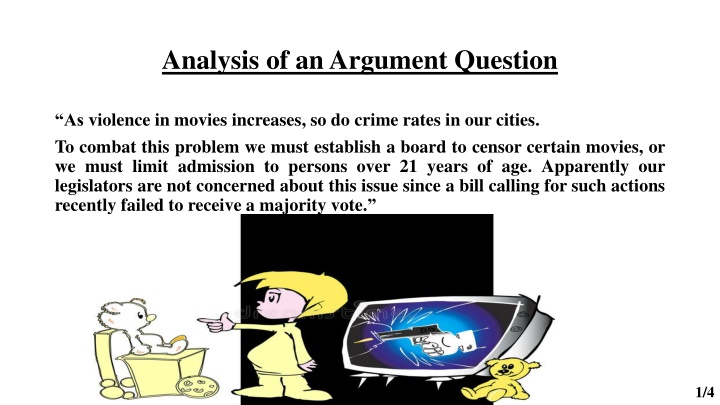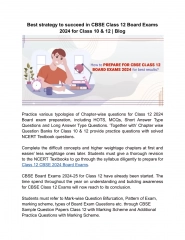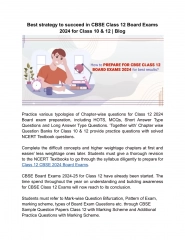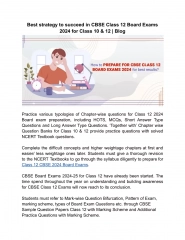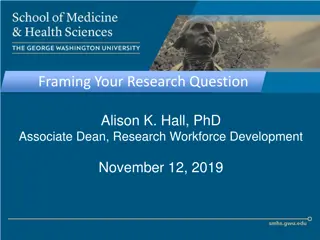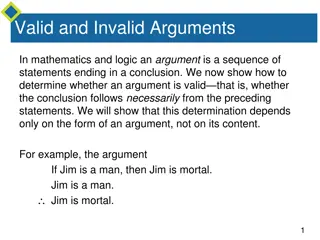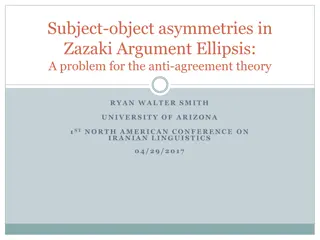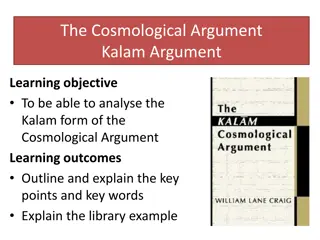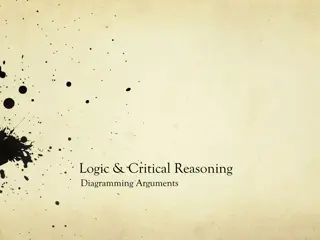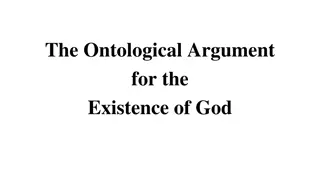Analysis of an Argument Question
The argument suggests a link between violence in movies and increasing crime rates in cities, proposing either movie censorship or age restrictions to mitigate the issue. This proposal raises questions about creative freedom, societal impact, and the effectiveness of such measures. Examining the complexities of this correlation is crucial in determining the appropriate course of action to address societal concerns related to media influence on behavior.
Download Presentation

Please find below an Image/Link to download the presentation.
The content on the website is provided AS IS for your information and personal use only. It may not be sold, licensed, or shared on other websites without obtaining consent from the author.If you encounter any issues during the download, it is possible that the publisher has removed the file from their server.
You are allowed to download the files provided on this website for personal or commercial use, subject to the condition that they are used lawfully. All files are the property of their respective owners.
The content on the website is provided AS IS for your information and personal use only. It may not be sold, licensed, or shared on other websites without obtaining consent from the author.
E N D
Presentation Transcript
Analysis of an Argument Question As violence in movies increases, so do crime rates in our cities. To combat this problem we must establish a board to censor certain movies, or we must limit admission to persons over 21 years of age. Apparently our legislators are not concerned about this issue since a bill calling for such actions recently failed to receive a majority vote. 1/4
The following questions arise: 1. Which law can forbid watching something what we choose, in our house? (such does not exist) 2. Whether minors watch violent content in the presence of parents? (If they watch, then the parents are also responsible) 3. Do bullies come from harmonious families? (Maybe their parents are criminals , or they live in a family where they watch violence every day) 4. Whether this is just an impression, or research has been done? 2/4
Analysis of an issue: However, my recent interviews with children living in the group of islands that includes Tertia show that these children spend much more time talking about their biological parents than about other adults in the village. Twenty years ago, Dr. Field, a noted anthropologist, visited the island of Tertia, and concluded from his observations that children in Tertia were reared by an entire village rather than by their own biological parents. This research of mine proves that Dr. Field's conclusion about Tertian village culture is invalid thus that the observation- centered approach to studying cultures is invalid as well. The interview-centered method that my team of graduate students is currently using in Tertia will establish a much more accurate understanding of child-rearing traditions there and in other island cultures. 3/4
The following questions arise: 1. Why they used different research methods? (Maybe observing would lead to the same result). 2.Are the questions skillfully adapted to different children's ages? (If they are not, they can easily lead to the wrong conclusion). 3.Is the same number and age of children included in both studies? (If not, then the research can not be compared). 4.Why they did not interview the parents of the children? (Maybe they are the children who grew up with influence of the village, and now they don't want their children to grow up like that). 4/4
